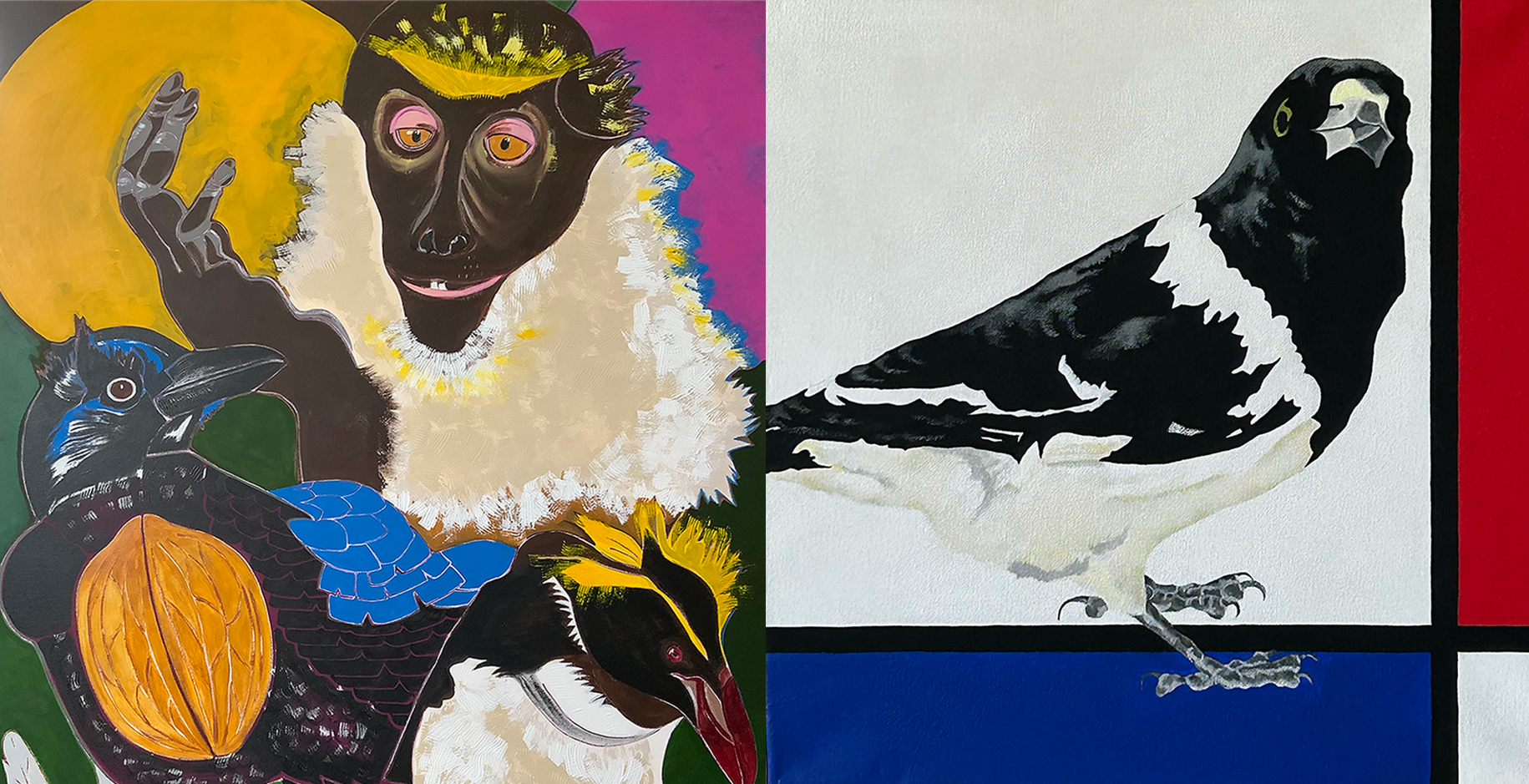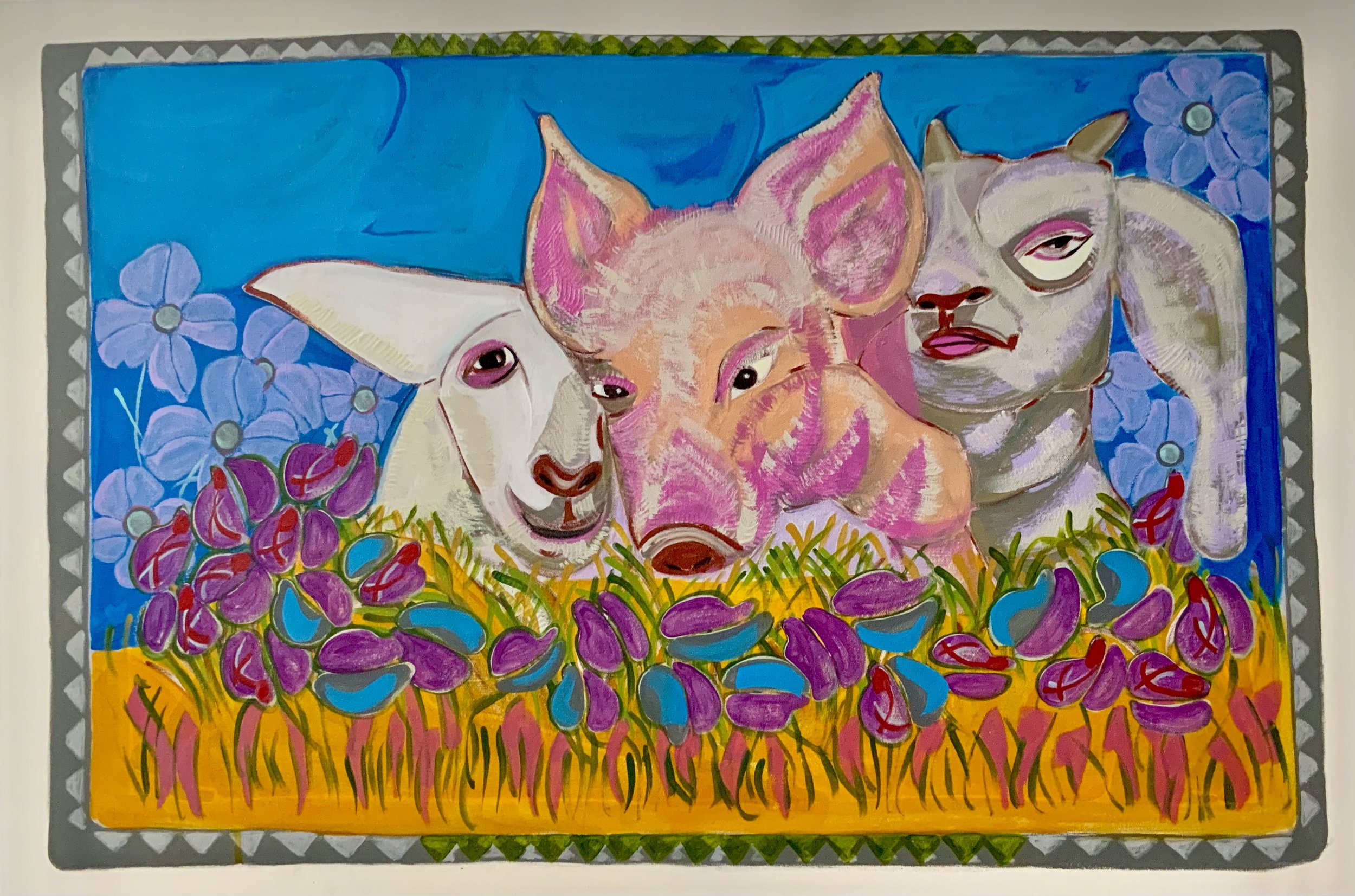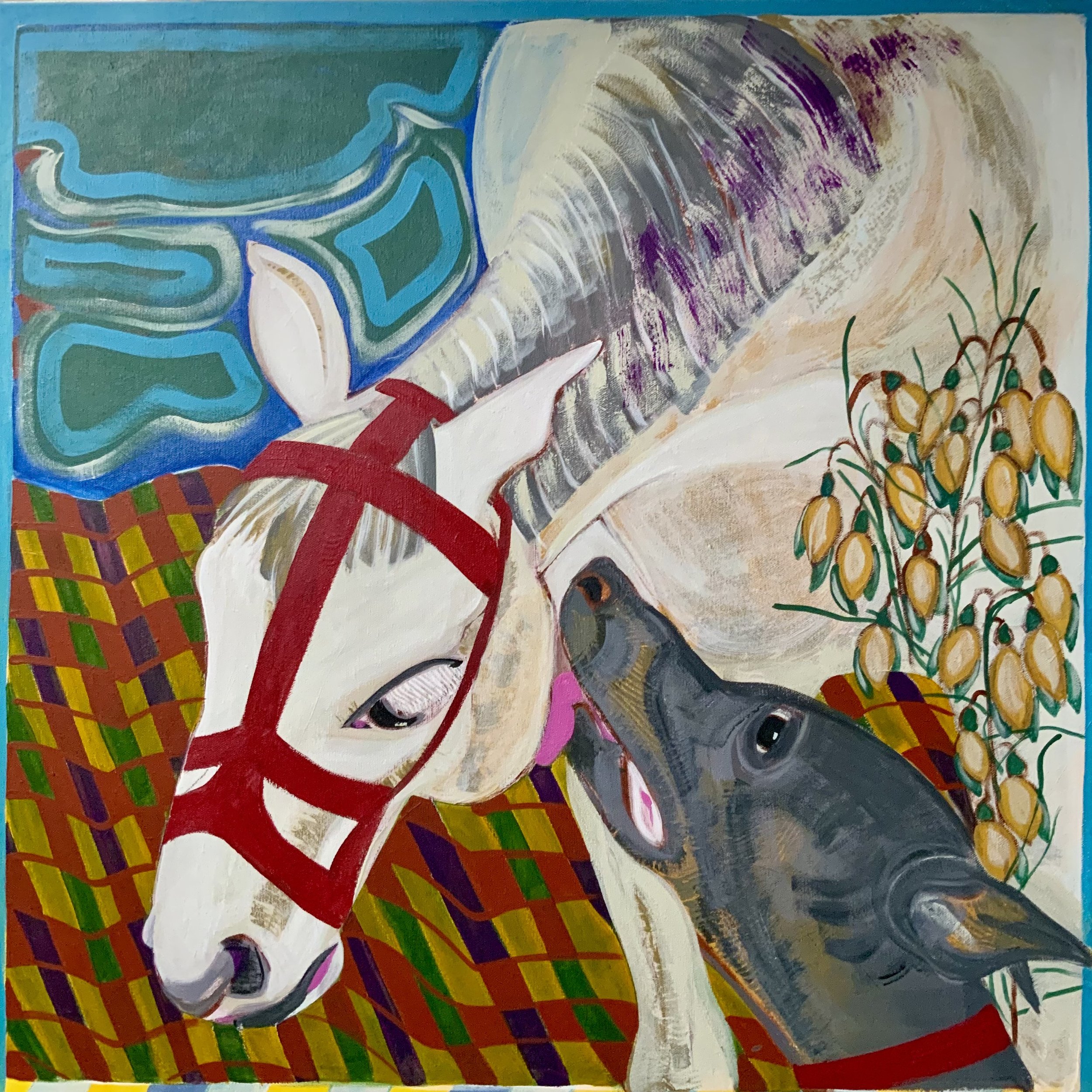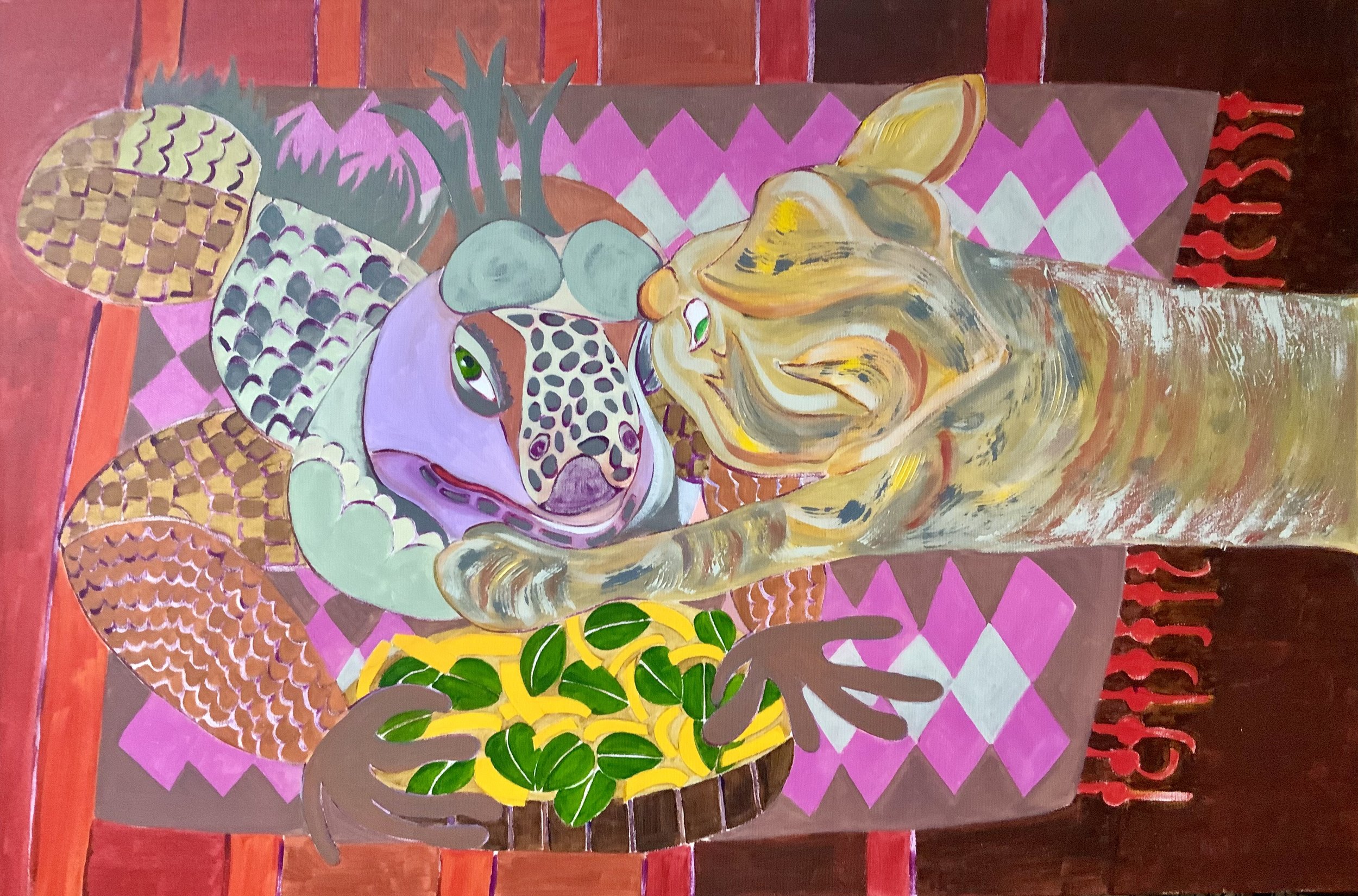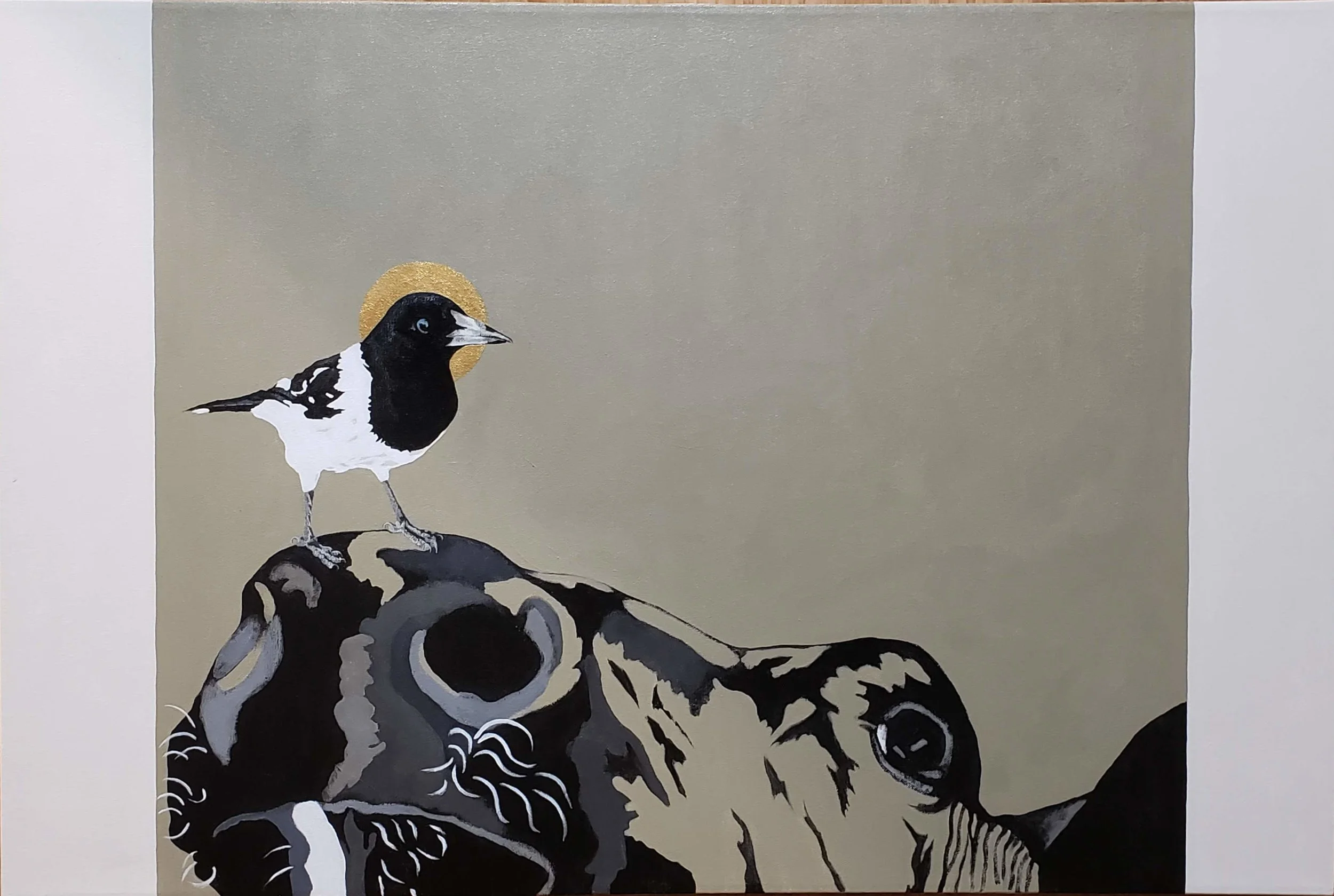
ANIMALS IN EXILE
Angela Cozea & Catherine Dhavernas
Two artists separated by a hemisphere explore the theme of exile both for animals and the people who encounter them.

An exhibition by artists Angela Cozea and Catherine Dhavernas. After spending several years in Queensland, Australia, part on academic leave and part during COVID, Catherine returned to Canada and on meeting her friend and colleague Angela found that they had been painting around the same idea while separated by a hemisphere. Their common concern in how animals both live at and have been pushed to the edges of human life informs an interest in the idea of exile both for the animals and the people who encounter them.
The exhibit engages a conversation between the two artists and their respective perspective and understanding of exile as it pertains to animals and animal life. Angela’s work depicts animals pushed to the margins of life. Using bold colours, vivid tones and dramatic contrast, her paintings portray behaviours, attitudes and dispositions that reveal their particular predicament. Catherine’s work transposes animals observed during her time living in Australia into the aesthetic world of painting to dissolve the boundary that traditionally separates nature and culture.

ANGELA COZEA
-
Angela has been painting since 2012, when illness prevented her from continuing in her profession as a professor of literature at U of T. Left in the impossibility to read or write, she went back to an old passion which had marked her early years, when she was trained in the traditional French techniques of the turn of the 20th century.
-
In her academic work, Angela had explored the relationship between the human and the animal worlds, the way in which these two share characteristics and purpose. The fact, for instance, that animals and particularly birds practice a kin aesthetic judgement, which makes them able to build their nests, for instance, with emphasis on their beauty and originality going well beyond strict utilitarian, mating motifs, as it is usually assumed.
In her paintings she has tried to represent ways in which animals of different species come together, when circumstances allow, and build loving relationships based, as far as we can tell, on feelings of comfort, dependability, warmth, rejection of solitude, and friendship, all giving the lie to our conviction that species are separated by strict borders, dictated by antagonism or predatory instincts.
From there, it is easy to see how the present day holocaust operated upon the animal world, the annihilation of its environments, comes to the fore in the representation of the beauty and dignity of all these species doomed by progress. Painting such beings on their way to extinction becomes a small gesture of witnessing, by which we can express our dismay at a loss which nothing and no one can justify.
CATHERINE DHAVERNAS
-
Catherine Dhavernas has been painting for more than 10 years while pursuing an academic career in French literature and the medical humanities. Based in Kingston, Dhavernas’ painting practice focuses on animals and was significantly impacted by the time she spent living in Australia over the last 5 years. While in Australia she began to exhibit her work in Brisbane and the Sunshine Coast in Queensland, including at the Ferryman’s Hut Art Space in Teneriffe, Juniper Art Gallery in Pomona and as part of the Tall Trees Exhibition in Cooran.
-
Catherine Dhavernas’ paintings use vivid colours and graphic representations of animals observed in nature and domestic settings to explore and question the relationship that exists between the human and animal worlds.
Dhavernas’ earlier paintings focused on animals observed in farmland and domestic household settings and sought, through the genre of portraiture, to open up a space for animals that is traditionally reserved to humans. As such her works introduced domesticated animal subjects into the context of biblical portraiture. When she moved to Australia in 2017, Dhavernas was struck by an ambiguous segment of animal life that occupies a space on the border of the animal and human world: the bush turkeys, noisy minors, butcher birds, pythons and water dragons who freely leave and enter the human universe of cafés, restaurants and homes and who are a striking sight to any tourist new to the area.
Observing animals and human reactions to the presence of animals in this context accentuated the illusion of control that humans claim to have over nature in simple, tangible and at times endearing ways. Whether chased, feared or welcomed, the persistence of such animals makes it clear that they are there to stay and that there is no point in struggling to keep them out. Exploring and working to dissolve the boundary that separates culture from nature, Dhavernas’ most recent work integrates key elements of her experience of Queensland animal life into the aesthetic world of modernist painting.
Angela reflects and provides insight into her connection to animals in preparation for the exhibition.
Catherine reflects about her art and the influences that have brought it to its current fruition.
Angela Cozea Artwork
Catherine Dhavernas Artwork

